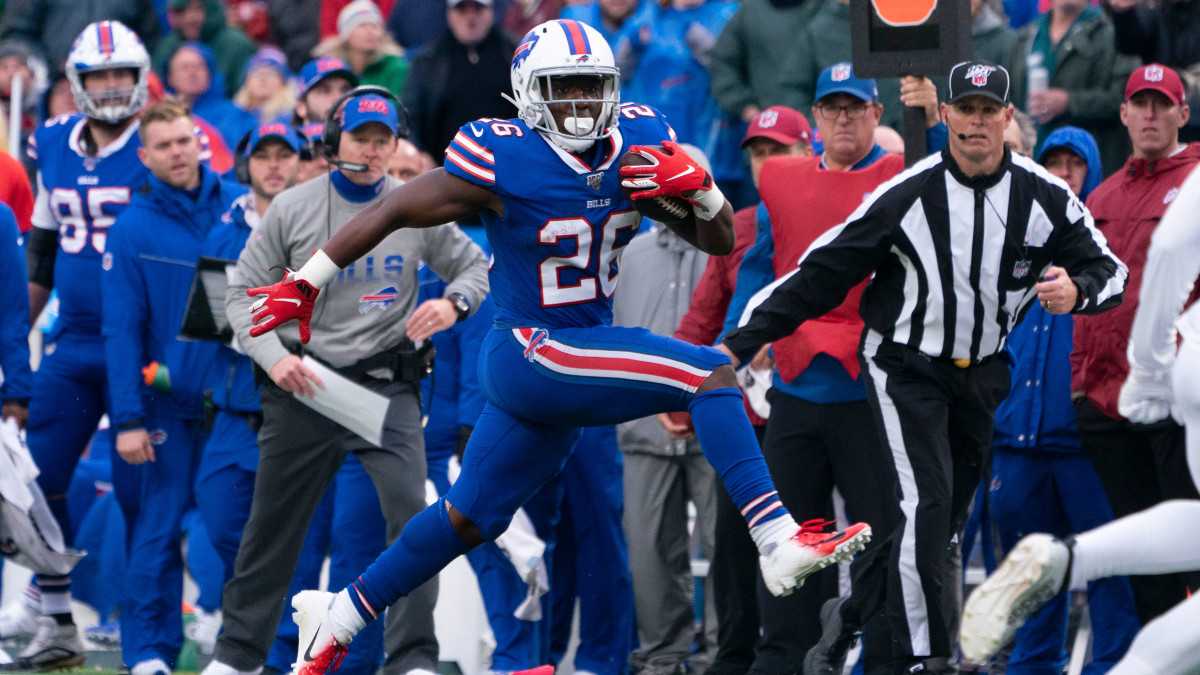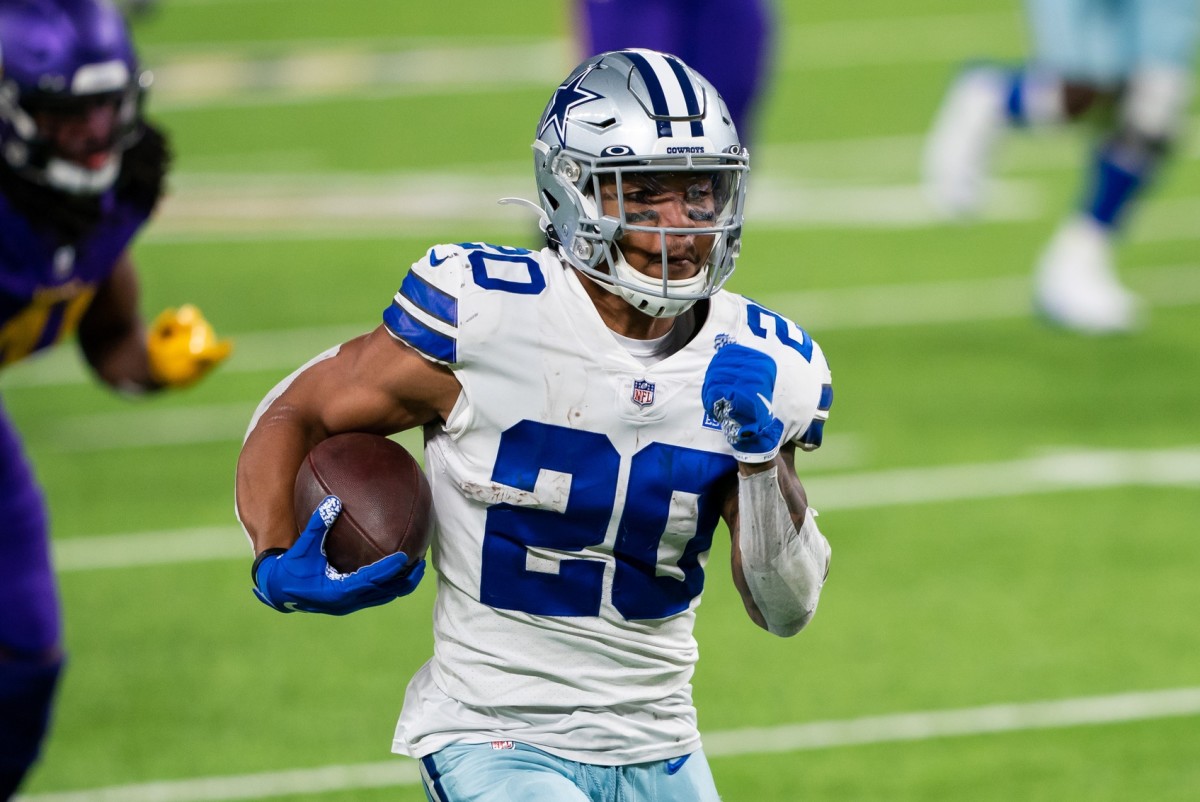2021 Fantasy Football RB3 & RB4 Scoring Targets: Secure Upside & Depth For Smooth Trip to League Playoffs
Scoring Targets series
QB | RB1/RB2 | RB3/RB4 | WR1/WR2 | WR3/WR4 | TE | FLEX | K/DST
After looking at the top 24 running backs in PPR scoring in the previous article, I wanted to show fantasy owners the pitfalls and drop-offs in running back inventory over the last four years.
Running Backs 25 to 36 point totals (2017 – 2020)

Running Backs 25 to 36
Owning a third productive running back in fantasy football can be gold as long as you have strength at your other positions. An excellent third option will help you in bye weeks, and that player could also be serviceable at the flex position. The third set of 12 running backs from 2020 averaged 151.06 fantasy points in full-point PPR leagues or 9.44 points per week, which fell in line with 2018 (151.78) but slightly below 2019 (154.61).
Typically, each year, we have a group of elite running backs with about a 60-point edge over the next group. Each tier of backs from there on will drop down a level or another 60 fantasy points in PPR leagues. The 60-point gap doesn't sound like much, but it adds up throughout a season. If you are weak at two positions on your roster, you most likely will miss the playoffs in your fantasy league.
RB3 Observations

It is imperative to draft some upside running backs on your team, but they will hurt you if you are forced to play them due to an injury to one of your top options if they are not getting regular playing time. Fantasy football is a pretty simple game. Most of the action will happen inside of the first 12 rounds of drafts. Every fantasy team should have their starting lineup after eight or nine rounds. Therefore, your decisions from rounds nine to 12 will be critical, especially if your team has a weakness at a position.
In 12-team PPR leagues, a top roster will need to score close to 1900 fantasy points over a 13-week schedule (2021 data will change with a 17th game added to the season) to be in the playoff hunt. A top team could score more than 2,100 points.
A fair goal from your starting quarterback and first two running backs would be to beat 55 fantasy points (QB – 23+ points, RB1 – 18+ points, and RB2 – 14+ points). A top RB, a solid RB2, and a mid-tier quarterback would deliver that score from a front draft position.
If you are drafting later in this format, an elite quarterback with two-second level running backs may deliver a similar score. It then would come down to the wide receiver and tight end positions to reach your target number to draft a competitive team.
After looking over each group of running backs, it’s interesting to see how close the final scores are each year when considering the vast changes in playing time and the high rate of injuries at the position. The overall player pool changes each year, which creates different tiers at each starting position. The key is gaining an edge whenever possible, plus identifying when there is an apparent drop-off in talent at each position.
To show you how weak the running back options will be if you miss on your RB3, here is a look at the results over the last four seasons for the 37th to 48th ranked backs:
Running backs 37 to 48 point totals (2017 – 2020)

The fourth group of 12 running backs averaged 7.14 fantasy points in PPR leagues in 2020. The 37th ranked player (Gus Edwards) scored 129.20 fantasy points (8.8 per week).

When building your running back depth on draft day, your first goal is finding the edge with your RB1. This player needs to be a three-down back with value in rushing, receiving, and touchdowns. If you feel the available options don’t meet these qualifications, you must gain an edge at another position.
The most successful fantasy owners will make these evaluations before draft day once they know their draft position. The goal is to determine the best start for your team based on the current draft flow or ADPs. The more thought a fantasy owner does before the draft, the better he will decide when on the clock on draft day.
It is also important not to be naïve when identifying an upside player. There is a ton of information written in the fantasy football market, and many fantasy owners will come to the same conclusion with breakout-type players.
In some cases, there may only be one running back you view as a difference-maker going early in the second round. If you have a draft pick late in the first round, the data points to your “targeted back” to be available for you with your second pick. This deduction leads to you looking at the best options at other positions while most likely settling in at the wide receiver position unless a top running back with three-down ability slides to you in the draft.
After reviewing the best options at wide receiver, the player pool may dictate multiple players of similar value. When seeing this develop, a fantasy owner must be open to moving the “targeted back” up to the first round to avoid being sniped by another sharp fantasy owner. By doing this, a fantasy owner accepts the closeness in value at the wide receiver position while knowing there may be a chance their number one wide receiver option may still slide to them in the second round.
Often late in the draft season, the edge players with upside will see their draft value rise. However, it’s important to keep in mind what the real upside of this player is. You don’t want to overvalue this player, where you end up drafting him before players with proven resumes.
If you get beat at the RB1 position, the next step down should be a passing catching back with early-down ability in PPR leagues. Many times fantasy owners will look to a running back with early down action plus scoring ability. Unfortunately, this type of running back leads to many failed scores when failing to deliver a touchdown. Within each of these decisions, a fantasy owner must also look at the value of the running backs in each offense to understand their ceiling and floor.
The running position runs out of talent quickly, but a fantasy owner must understand that there will be multiple starting opportunities created during the season by injuries. If I miss the top RB2 options, I will focus on finding the best pass-catching talent in PPR leagues to fill the short-term gap. The more outs that you give yourself on your roster at running back, the better chance you have of filling your weakness at some point later in the season.
The first cut of the 2021 NFL Rankings & Projections should give some insight into this draft season's potential values and targets.
More Fantasy Football:
- 2021 Fantasy Team Outlooks
- 2021 NFL Projections & Rankings
- Fantasy Case Against D'Andre Swift
- Fantasy Football Fades: Buyer Beware! Six Players With Red Flags
Senior analyst Shawn Childs is a multi-sport, high-stakes fantasy legend with lifetime earnings in the high six-figures. He has been providing in-depth, analytical break downs for years all while helping his subscribers to countless titles and winnings across season-long & DFS. A inaugural inductee of the NFBC Hall of Fame, Shawn can teach you how to prep like a champ!
